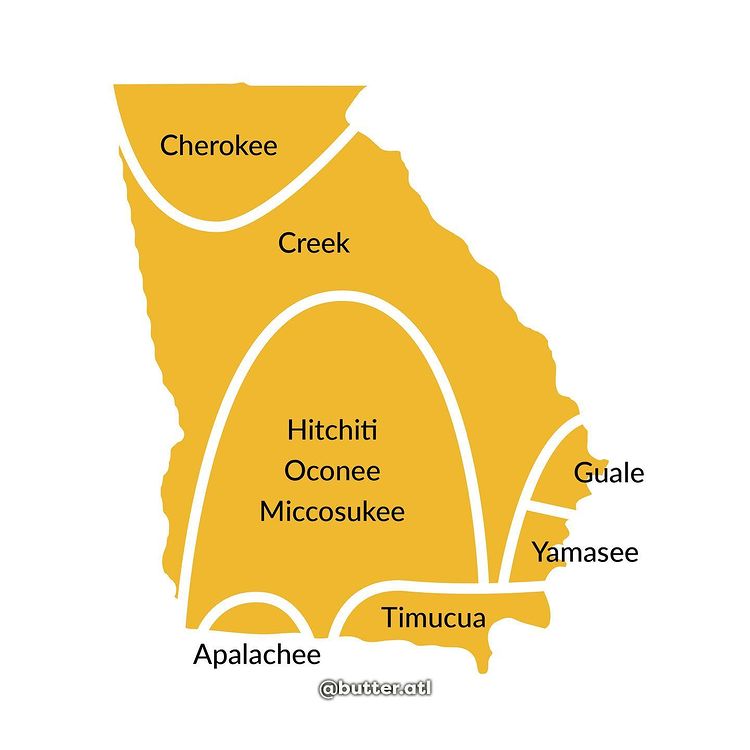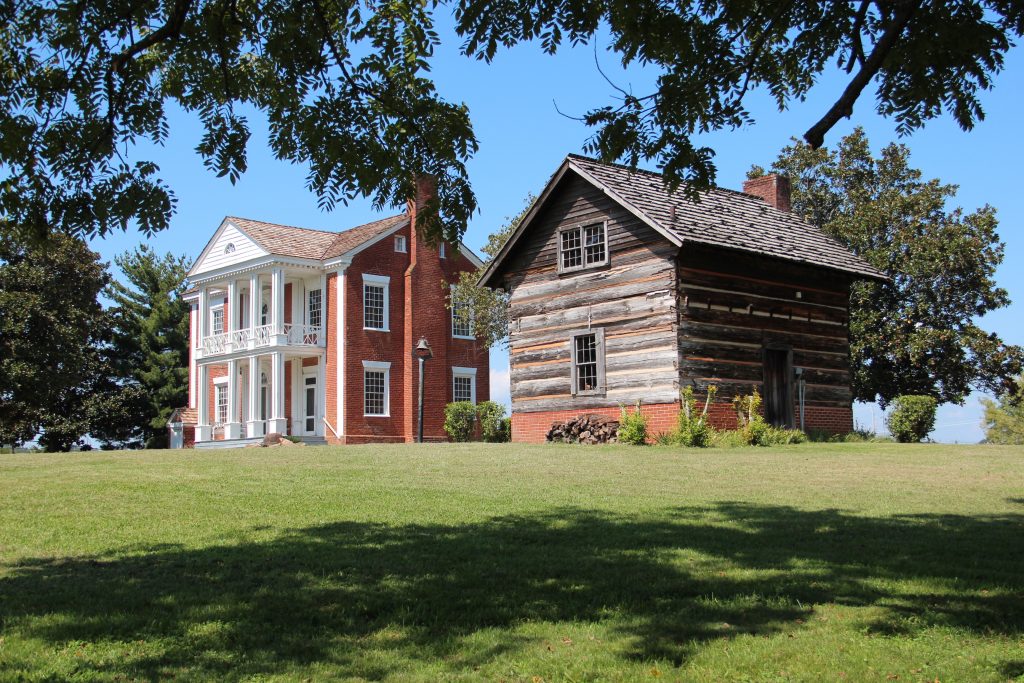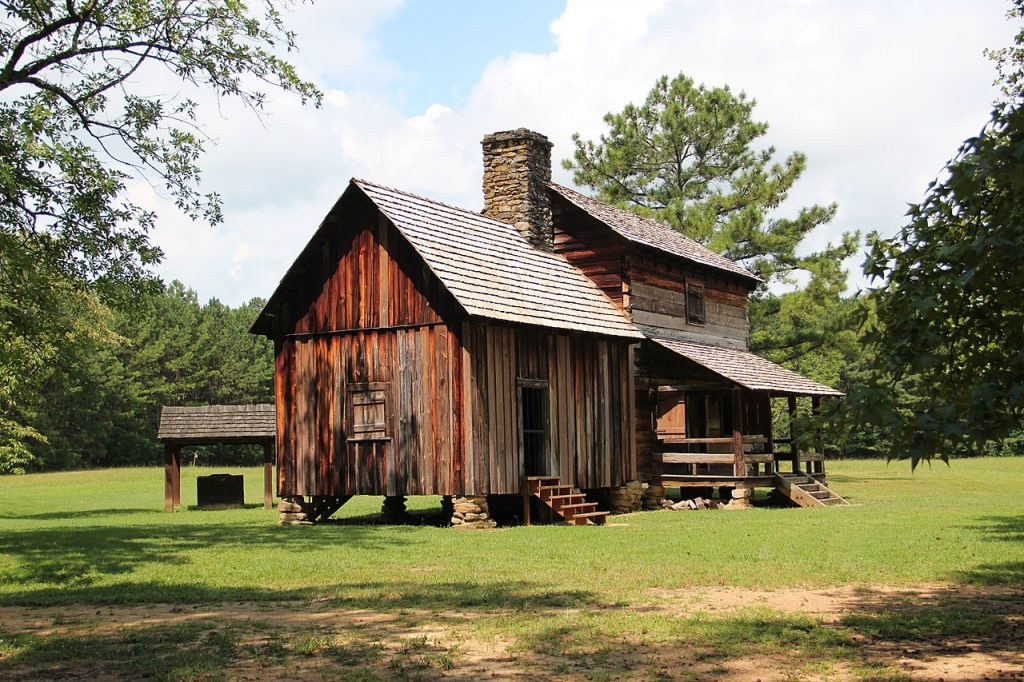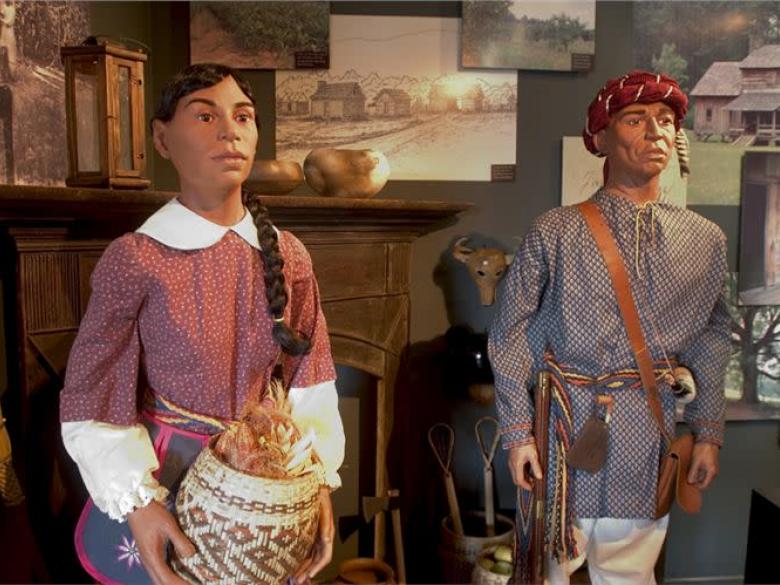The Churn
Why Remembering ATL’s Native American History Is So Important
Butter ATLNovember 19, 2021

Few things are as recognizably Atlanta as the vast (and often traffic-filled) network of roads across the city known as Peachtree Street, which stretches from just below Five Points, the heart of Downtown Atlanta, through Midtown and Buckhead, before changing into Peachtree Road to the north. The street name has become synonymous with the city of Atlanta itself over the years, but the origins of “Peachtree” are much less known, and in fact illuminate another side to Atlanta’s history altogether.
The area that would eventually become the Atlanta we know and love, situated beside the Chattahoochee River, was originally inhabited by the Creek and Cherokee Native tribes. The space where Peachtree Creek — one of Atlanta’s major tributaries — flows into the Chattahoochee was originally a Native village named Pakanahuili, a Creek word meaning “Standing Peach Tree.” This Native village, a center of trading, culture, and harvest for the inhabitants, is responsible for the “Peachtree” street name.
This is just one example of the multiple layers of history and culture living underneath the city. With Thanksgiving 2021 just days away, it’s important to learn and acknowledge the deep roots of our Indigenous siblings that run all around us.
In fact, exploring the deep-rooted histories lying beneath our bumpy roads may help to explain, in part, the political “culture wars” Atlanta has repeatedly found itself in since its inception.
The rightfully controversial “Tomahawk Chop”, a mainstay at Atlanta Braves games for decades which was recently endorsed by Governor Kemp himself, has long been called out by Indigenous activists as a racist gesture. And if you’re old enough to remember, the mascots, purchasable memorabilia, marketing materials, and general imagery of the team have all at different times leaned heavily on reductive, trope-filled Native symbols. Not to mention, the team name itself is taken from a colonial term for Native warriors.

More relics of the city are bound to hold just as much quiet history, and eventually find themselves in the center of this culture war. Just last month activists successfully got the City of Decatur to remove a hotly debated Confederate monument, dubbed the “Genocide Cannon,” which shamelessly symbolized the killing of at least 3,500 Native Americans in the Indian War of 1836.
Many would be surprised to learn that Stone Mountain, which has its own sordid history filled with Confederate apologia and literal KKK rebirths, was inhabited by Cherokee, Creek, and Muscogee tribes for thousands of years. The mountain was used by the Natives as a sacred ceremonial and meeting ground for the various tribes, and it remained this way until European settlers forced their way onto the land.
However, the point of this reflection is not to bring up long-debated racial (or colonial) relaties. Rather, it’s to ask a question about Atlanta’s long, exciting, and often hidden histories, and how avoiding or outright erasing these histories allows for folks to feel good and comfy doing things like “the chop.”
Because when you look around and see no history nor context for the names of the streets, no recognition of the original tenants of the land nor their labor, no attempts to communicate the history of the names people so freely profit from, no crystallization of the past in our current realities; when you relegate the past to something worse than an afterthought, it becomes unthought, and eventually lost.
We already know the cost of allowing ourselves to forget, unlearn, or avoid. We’ve seen this play out with Atlanta’s long Black past, before the Civil Rights Era (where many seem to believe that this city’s history began) and long before Underground Atlanta, The Varsity, or any other “staple” was erected. New, corporatized histories can crop up in place of the more complex realities and cause erasure. The chain gang labor which paved those same Peachtree Streets becomes unthought when luxury condos are erected, and the auction block which would eventually become known as Underground Atlanta gets plastered with a more palatable telling of history.
The good news? Thanksgiving offers us a perfect chance to remember the histories of our Indigenous siblings, to learn the DNA of the land we walk on. And Atlanta’s surrounding areas are rich with historical sites all around.
So while you prepare to plop the mac ‘n cheese on your plate and argue at the table with your relatives who won’t stop going on about Lil Nas X, let this reflection be a fire under your ass to think a bit deeper on what this holiday season really means, and to seek out the living history around you.
And to help you do just that, I’ve put together a small list of some historic Native American sites in and around Atlanta that you can go and visit for yourself.
Standing Peachtree

One of Buckhead’s most important historical sites, Standing Peachtree is a lush park that runs alongside the Peachtree Creek to the point where it intersects with the Chattahoochee. The area was once the home of a Creek village and trading post, and contains tons of history on the grounds, like Fort Peachtree and Atlanta’s very first post office.
Etowah Indian Mounds

Located just 45 minutes north of the city are the Etowah Indian Mounds, one of the most important prehistoric sites in the southeast. Take a day trip to visit the massive man-made mounds, which are situated alongside a beautiful river walk and park that were important to Native agriculture, and take in the history inside the well-maintained Etowah archaeological museum.
Chief Vann House

For those wanting a look at the entangled histories of Black and Native communities, the Chief Vann House offers a unique picture into the past. The Vann family were part of a minority of Cherokee people who amassed a great wealth through agriculture and commerce before being forced to leave, however the cost of gaining their fortune was partially built on the backs of enslaved Africans. Bring a critical eye when you arrive.
New Echota

New Echota is a very significant historic site, known as where the Cherokee Nation gathered before they were forcefully removed — where the “Trail of Tears” officially started. New Echota became the capital of the Cherokee Nation briefly, hosted the first Native-language newspaper office and a courthouse, and several original buildings are still standing today.
Chieftains Trail

For those who want to turn a historical field trip into a weekend trip, the Chieftains Trail is an immersed 200-mile driving tour throughout Northwest Georgia that focuses on Mississipian, Creek, and Cherokee histories. The trail offers you a look into hundreds of years of history, culture, events, and nature.

